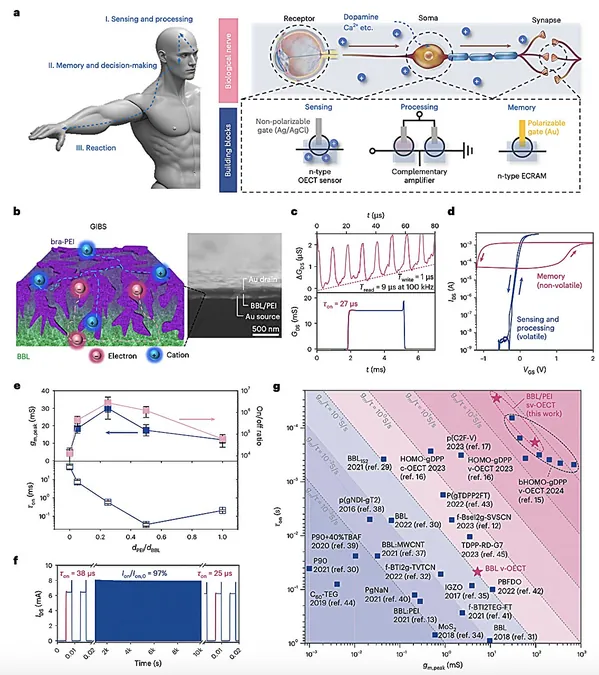
Breakthrough in Artificial Nerve Technology: Will Brain-Machine Interfaces Reach New Heights?
2025-03-24
Author: Wei Ling
In a remarkable development for the field of bioengineering, researchers from Xi'an Jiaotong University in China and the Technical University of Munich have made strides toward creating a new generation of artificial nerves that could revolutionize brain-machine interfaces. These innovative systems aim to mimic the function of biological nerves, providing exciting applications in fields ranging from medical rehabilitation to advanced electronics.
Artificial nerves are designed to replicate the critical role that human and animal nerves play, potentially enabling groundbreaking solutions for repairing damaged nerves and enhancing the capabilities of brain-computer interfaces (BCIs). However, until now, challenges have arisen in developing nerve-inspired systems that operate at biologically compatible frequencies while effectively emulating natural nerve functions.
The research team has introduced a high-frequency artificial nerve using a sophisticated design that enhances both ion and electron transport, enabling a swift response to signals and improved charge retention. Detailed in a recent publication in *Nature Electronics*, this artificial nerve leverages homogenously integrated organic electrochemical transistors, specifically n-type variants, which possess the unique ability to mirror the behavior of biological cells under certain conditions.
"Conventional organic electrochemical transistors have struggled with limitations related to ionic and electronic transport capacity," the researchers noted in their publication. Their new vertical n-type organic electrochemical transistors, strategically constructed in layers onto a substrate, emulate the functions of nerve receptors, synapses, and somas, creating circuits that function similarly to biological nerves.
The new device boasts an impressive volatile response time of 27 microseconds, with a non-volatile memory frequency reaching 100 kHz. Furthermore, it outperforms previous artificial nerve systems by achieving significant advancements in both ionic and electronic transport, as well as in long-term ion storage—breaking through the trade-offs seen in earlier iterations.
The implications of this technology are vast, offering capabilities in sensing, processing, and memory functions—all in high-frequency domains. In a notable experiment, the researchers implanted the artificial nerve into mice with compromised neural functions. The results were encouraging: the implanted systems proved compatible with the mice's biological tissues and successfully replicated essential reflex behaviors, indicating therapeutic potential in real-world applications.
The future looks bright for this artificial nerve technology. Researchers foresee possible enhancements that will allow for testing across broader applications, seeking to ensure safety and performance. If successful, this technology could lead to extraordinary breakthroughs in creating advanced nerve repair solutions and sophisticated brain-computer interfaces. Imagine prosthetic limbs operated directly through thought, or devices that could help paralyzed individuals communicate seamlessly with the world around them.
This revolutionary artificial nerve research has opened the door to a new frontier in medical and technological applications, potentially transforming lives and changing the landscape of neuroprosthetics and neuroscience as we know it. Stay tuned as researchers continue to push the boundaries of what's possible!




 Brasil (PT)
Brasil (PT)
 Canada (EN)
Canada (EN)
 Chile (ES)
Chile (ES)
 Česko (CS)
Česko (CS)
 대한민국 (KO)
대한민국 (KO)
 España (ES)
España (ES)
 France (FR)
France (FR)
 Hong Kong (EN)
Hong Kong (EN)
 Italia (IT)
Italia (IT)
 日本 (JA)
日本 (JA)
 Magyarország (HU)
Magyarország (HU)
 Norge (NO)
Norge (NO)
 Polska (PL)
Polska (PL)
 Schweiz (DE)
Schweiz (DE)
 Singapore (EN)
Singapore (EN)
 Sverige (SV)
Sverige (SV)
 Suomi (FI)
Suomi (FI)
 Türkiye (TR)
Türkiye (TR)
 الإمارات العربية المتحدة (AR)
الإمارات العربية المتحدة (AR)